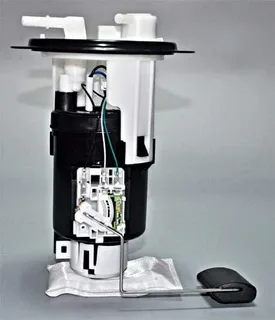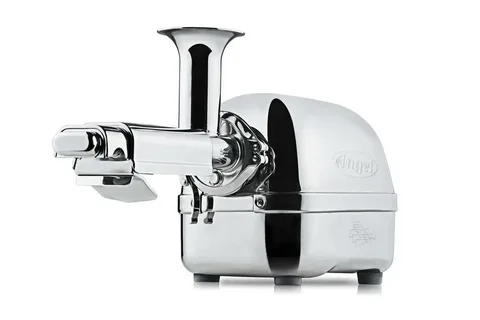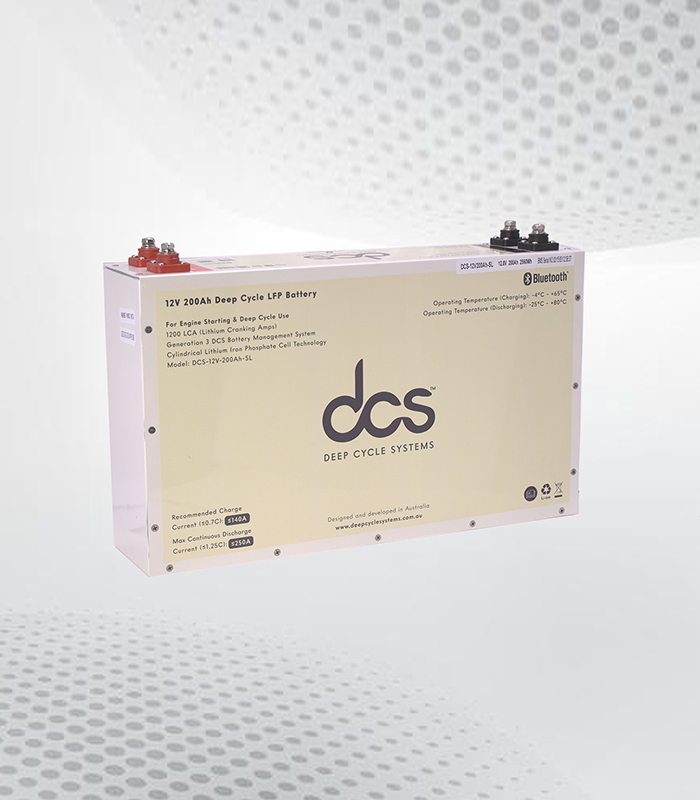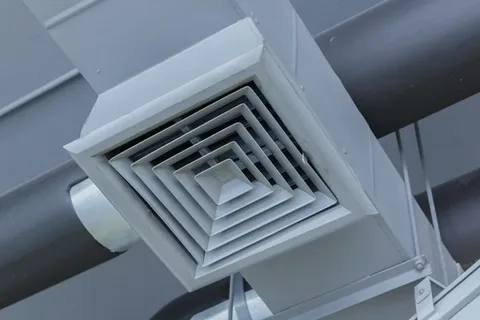If you own a Hyundai Getz, you know how crucial it is to keep your vehicle running smoothly. One essential component that can often be overlooked is the fuel pump. A failing fuel pump can lead to poor performance or even complete breakdowns, leaving you stranded when you least expect it. But don’t worry; replacing the fuel pump doesn’t have to be a daunting task! With the right tools and guidance, you can tackle this job yourself. This step-by-step guide will help you understand your Hyundai Getz Fuel Pump and install a new one confidently.
Understanding The Fuel Pump and Its Role
The fuel pump is a vital component of your Hyundai Getz’s engine. Its primary role is to deliver gasoline from the fuel tank to the engine at the correct pressure. Without it, your vehicle won’t run.
Modern fuel pumps are typically electric and located inside or near the fuel tank, ensuring they can supply a steady fuel flow when needed. They maintain consistent pressure, which is crucial for optimal engine performance and efficiency.
When you start your car, the pump activates automatically, pushing fuel through lines and into the engine’s combustion chamber. This process powers everything from acceleration to idling smoothly at stoplights.
A failing fuel pump can manifest in various ways, such as engine sputtering, difficulty starting, or even stalling while driving. Understanding its function helps you recognise warning signs early to address issues before they escalate into more significant problems.
Tools and Materials Needed for Replacement
Before replacing your Hyundai Getz fuel pump, it’s essential to gather the right tools and materials. Having everything on hand will make the process smoother and more efficient.
Start with basic hand tools like a socket wrench set, screwdrivers (both flathead and Phillips), and pliers. A torque wrench ensures all bolts are tightened to manufacturer specifications. RememberRemember to illuminate dark areas under your vehicle with a flashlight or work light.
You’ll also need safety gear like gloves and goggles to protect yourself while working. Fuel can be hazardous, so proper attire is crucial for avoiding any accidents during this task.
Invest in an OEM replacement fuel pump designed specifically for your Hyundai Getz model to ensure compatibility and performance. Additionally, have some rags handy to clean up spills or wipe down surfaces as you proceed.
Preparing Your Hyundai Getz for Fuel Pump Replacement
Before you replace the fuel pump in your Hyundai Getz, it’s crucial to prepare properly. Start by ensuring that your vehicle is parked on a flat surface. This will make the job easier and safer for you. Engage the parking brake to prevent any unexpected movement during the process.
Next, gather all necessary tools and materials ahead of time. You’ll need basic hand tools such as wrenches, screwdrivers and safety gear like gloves and goggles. Having everything within reach allows you to work efficiently without interruptions.
It’s also essential to relieve pressure from the fuel system before starting any work. You can do this by removing the fuel cap and locating the fuel pump fuse or relay under your hood; pull it out while running the engine until it stalls.
Disconnecting your car battery is vital for safety reasons. It prevents electrical shorts or accidental sparks when working around fuel lines and connections in your Hyundai Getz’s tank area.
Step-By-Step Guide to Removing the Old 31110-1C000
To remove the old 31110-1C000, locate it. Typically, it’s situated inside the fuel tank. Follow the previous steps to access the pump to ensure you’ve properly prepared for this task.
Next, ensure you’ve disconnected the battery to avoid any electrical mishaps during removal. This is a critical safety measure when working on any part of your vehicle’s fuel system.
After disconnecting the battery, carefully unfasten any screws or clips securing the fuel pump assembly in place. Use your tools effectively to avoid damaging surrounding components, and make a note of how everything fits together for reinstallation later.
Once you have removed these fasteners, gently pull the old fuel pump from its housing. Take care not to damage any connecting lines as you do this. With patience and precision, you’ll be ready to install your new Hyundai Getz fuel pump without hassle.
Safety Precautions
Safety should always be your top priority when working on your Hyundai Getz fuel pump. Start by ensuring that you have a well-ventilated workspace. Fumes from gasoline can be hazardous, so open the garage door or work outdoors if possible.
Next, wear appropriate protective gear. Safety goggles shield your eyes from splashes or debris, while gloves protect your hands from cuts and chemicals. Avoid loose clothing that could get caught in moving parts during the process.
Disconnecting the battery is crucial before starting any work on the fuel system. This step prevents sparks and electrical hazards while handling sensitive components like the fuel pump and its connections.
Keep a fire extinguisher nearby just in case an emergency arises. Having it within reach ensures that you’re prepared for unexpected situations related to flammable materials around you as you replace the fuel pump in your Hyundai Getz.
Disconnecting The Fuel Lines
Before you disconnect the fuel lines, ensure your work area is safe and well-ventilated. The fuel pump in a Hyundai Getz can be sensitive, so take your time. Wear gloves to protect your hands from any residual fuel.
Locate the fuel lines connected to the old pump. Usually, there are two: one for supply and another for return. Use a wrench or pliers to loosen these connections carefully. Avoid excessive force; you want to prevent damaging fittings that could lead to future leaks.
Once they’re loose enough, gently pull them away from the pump. Be prepared for some spillage—fuel can easily escape during this process—so keep a rag handy for quick clean-up.
After removing both lines, inspecting them for wear or damage before attaching anything new later on is crucial. This small step ensures everything runs smoothly when installing your shiny new Hyundai Getz fuel pump.
Installing The New Fuel Pump
Installing the new fuel pump is straightforward if you have followed the previous steps carefully. Begin by placing the new pump into the designated housing. Ensure it fits snugly and aligns properly with any mounting brackets or clips. A secure fit will prevent vibrations that could lead to premature failure.
Next, reconnect any electrical connectors associated with the fuel pump. Make sure they click into place and are free from dirt or corrosion. This step is crucial for ensuring your Hyundai Getz operates efficiently after installation.
Once everything is connected, you can replace any retaining rings or covers removed during disassembly. Be gentle but firm when securing these components to avoid damaging them; overstressing parts can create leaks later.
After securing all elements, take a moment to double-check each connection before proceeding further. A thorough inspection now will save time and frustration later as you prepare to test the system’s functionality once installed correctly.
Aligning and Securing the New Hyundai Getz Tailgate Actuator
Once your new Hyundai Getz Tailgate Actuator is ready, it’s time to position it correctly. Carefully align the pump with the mounting points in your Hyundai Getz. Ensure all holes line up properly; this step is essential for a secure fit and optimal performance.
Next, gently slide the pump into place. Take your time here—forcing it can lead to damage or misalignment. Ensure that any seals are seated properly before fastening components together.
With everything lined up, grab your tools and start securing the pump. Initially, use hand-tightening techniques; overtightening can strip threads or crack materials.
After you’ve secured everything snugly, do a quick visual inspection to confirm proper alignment and tightness of connections. A well-aligned fuel pump enhances efficiency and reduces potential issues down the road.
Reconnecting The Fuel Lines and Electrical Connections
Once the new fuel pump is securely installed, it’s time to reconnect the fuel lines and electrical connections. Start by carefully aligning the fuel lines with their respective fittings on the new pump. Make sure they fit snugly to avoid any leaks in the future.
Next, secure each connection by tightening it with a wrench or your hands if it’s designed for manual engagement. Be cautious not to overtighten, as this can damage the fittings. A good seal is essential for optimal performance.
Now, turn your attention to the electrical connections. Locate the wiring harness that connects to your new pump and gently plug it in until you hear a click. This indicates that it’s properly seated and ready for power.
Double-check all connections before proceeding. Look over the fuel line and electrical attachments to ensure everything is correctly positioned and secure. This will set you up for a smooth start when you fire up your Hyundai Getz again.
Testing The New Fuel Pump Installation
Once you’ve installed the new fuel pump in your Hyundai Getz, it’s time to test its functionality. Start by turning on the ignition without cranking the engine. This will activate the fuel pump and allow it to pressurize the system. Listen for a humming sound, indicating the pump is working properly.
Next, check for any leaks around the connections you made during installation. A clear area under your vehicle should confirm no issues are present. If you notice any leaking fuel, turn off the ignition immediately and address those areas before proceeding.
After ensuring no leaks, crank your engine and let it run for a few minutes. Please pay attention to how smoothly it starts and operates after replacing the fuel pump. Any rough idling or stalling could signal an issue with your new installation.
Take it for a short drive while monitoring performance closely. Look out for signs like hesitation during acceleration or unusual noises from under the hood—these may indicate underlying problems needing further investigation.
Conclusion
Replacing the fuel pump in your Hyundai Getz is a manageable task that can save you time and money. Most car owners can handle this job independently with the right tools and careful steps.
Pay attention to each phase of the process. Every detail matters, from safely disconnecting the fuel lines to ensuring everything is securely in place. A well-executed installation will have your vehicle running smoothly again.
Remember to monitor your Hyundai Getz fuel pump’s performance after replacing it. Look for unusual sounds or warning lights on your dashboard. This vigilance will help catch potential issues early.
FAQs
What symptoms indicate a failing fuel pump?
Common signs include difficulty starting the engine, sputtering during acceleration, or poor performance at high speeds. If you notice these issues consistently, check your fuel pump.
How long does it typically take to replace a fuel pump?
The replacement process usually takes 2 to 4 hours for someone with moderate mechanical skills. However, this duration can vary based on experience and whether additional repairs are needed.
Do I need special tools to replace my Hyundai Getz fuel pump?
While basic hand tools like wrenches and screwdrivers will suffice, having a specialized tool kit for automotive work makes things easier. A torque wrench is particularly useful when securing components back into place.
Can I drive my car if the fuel pump is failing?
You should not drive your vehicle if you suspect a faulty fuel pump. Continuing to operate the car could cause complete failure of the system or damage that leads to more expensive repairs down the road.





